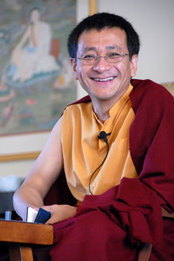by Greg Zwahlen
Foreign Policy published an article not long ago by Wen Liao called Why the Dalai Lama Needs to Get Real. Liao writes:
Advocates of Tibetan rights are disappointed that Barack Obama has chosen not to meet with the holy man who carries their banner. But they should be learning from the U.S. president’s pragmatism instead. . . .Many of the Tibetans who live in the Chinese provinces that border Tibet and would be part of a Greater Tibet arrived in these areas only in the last 50 years. So to ordinary Chinese it seems hypocritical that Han Chinese shouldn’t be allowed to move to Tibet, but that Tibetans who emigrate into other Chinese provinces somehow gain a claim to self-government in those regions. . . . . .If the Dalai Lama is to be taken seriously by China as a negotiating partner, in fact, he must emulate President Obama and learn realpolitik. That means acknowledging that he is negotiating only over the territory contained within the borders of the Tibet that he fled 50 years ago. Only by limiting Tibetan demands in this way will it be possible to begin to convince ordinary Chinese that he is not hellbent on splitting their country.
Liao may or may not be suggesting a winning strategy here, but unfortunately she presents her suggestions based on assertions that are quite misleading.
It’s true that Tibetans are moving into areas that were not controlled by the Lhasa government fifty years ago. However, she makes it sound as though they are trying to take over areas that are historically Chinese (“other Chinese provinces”). The reality is, vast parts of what have historically belonged to the cultural sphere of Tibet–particularly much of Amdo and Kham–haven’t been controlled by the Lhasa government for hundreds of years. But they have always had a large proportion of self-governing Tibetans, and that is the basis for any “claim to self-government in those regions”–not the fact that additional Tibetans have arrived in the last fifty years. To make such an assertion is deceptive, as is comparing recent Tibetan arrivals in those areas to the Han Chinese flooding the historic Tibetan heartland.
The truth, of course, is often complicated (did you know that His Holiness’s first language was Chinese?), and it should be acknowledged that both sides are prone to distorting it. But the claim of Tibetans for autonomy in an area much larger than that which the Lhasa government controlled in 1950 is quite legitimate, and not based on recent population movements. Whether or not the Dalai Lama should limit his campaign to the borders of the Lhasa government in 1950 in the interests of realpolitik is another matter. Sadly, my feeling is the situation of Tibetans will not improve until China as a whole has more freedom, regardless of the territory to which Tibetan activists limit their claims. So perhaps in light of this His Holiness is even more unrealistic than Liao seems to believe.

